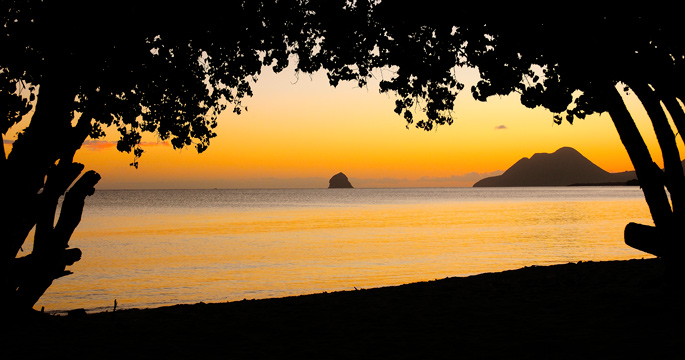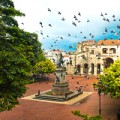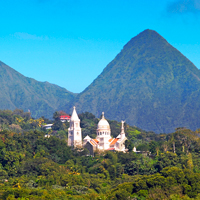This Caribbean landmark is the world's most unlikely war ship
When visitors to Martinique admire the sunset from Pointe Diamante, they might be surprised to know that the small island on the western horizon was once part of the Royal Navy. During the Napoleonic wars, British commander Samuel Hood realized that the volcanic spire known as Diamond Rock occupied a strategic position between the islands of Martinique and St. Lucia. In January of 1804, he sent crews to scale the islands rugged heights.
Fortifications were built, cannons were hauled up the cliffs by rope, and the rock was commissioned as HMS Diamond Rock, with the designation of a sloop of war. For the next 18 months, the guns mounted atop the rock harassed French vessels, forcing them to steer wide of the coast of Martinique, and away from the harbor at Fort-de-France. The French navy eventually mounted an attack. The rock withstood two weeks of withering cannon fire, but short on food and water, the British sailors lowered the flag on their ship that couldn’t be sunk.
Today, uninhibited Diamond Rock provides refuge for sea birds and a number of rare land animals. But naval traditions run deep, and to this day, whenever a British warship passes the rock, they salute their “stone frigate.”





